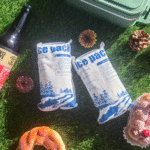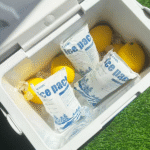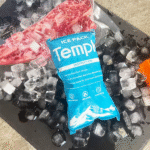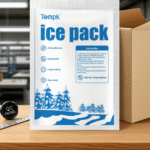How to Use Dry Ice in a Cooler: Eine vollständige Anleitung für 2025
Dry ice is the ultimate solution for keeping items frozen for extended periods. Ideal for long trips, Stromausfälle, or shipping perishable items, it’s essential to understand its safe use and proper handling. In diesem Leitfaden, we’ll explore everything you need to know about using dry ice in coolers, including best practices, safety guidelines, und die neuesten Trends in 2025.
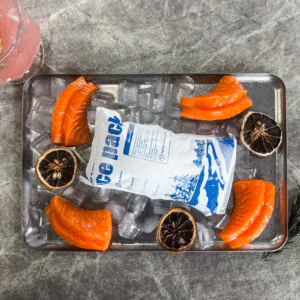
Was ist Trockeneis und wie funktioniert es??
Trockeneis ist die feste Form von Kohlendioxid (Co₂), known for its exceptionally cold temperature of -78.5°C (-109.3° F). Im Gegensatz zu normalem Eis, was zum Wasser schmilzt, dry ice sublimates directly from a solid to a gas, keine Rückstände hinterlassen. This unique property makes it ideal for maintaining cold temperatures during transport or storage, especially when water from regular ice could be harmful.
Why Choose Dry Ice Over Regular Ice?
Dry ice offers numerous advantages compared to traditional ice:
-
Niedrigere Temperatur: Dry ice keeps items frozen far below the freezing point of water, which is essential for preserving items like meat, Impfungen, und Biotech -Produkte.
-
Kein Schmelzwasser: Since dry ice sublimates into CO₂ gas, there’s no mess to clean up, making it ideal for dry transport.
-
Längere Kühldauer: Trockeneis dauert deutlich länger als normales Eis, reducing the need for frequent replenishments during long shipments or extended storage.
Jedoch, dry ice does have its limitations. It requires careful handling to ensure proper ventilation due to the CO₂ gas, and it has a shorter duration of cooling power compared to regular ice under certain conditions.
How to Safely Use Dry Ice in a Cooler
1. Mit Sorgfalt verarbeiten
Dry ice is extremely cold, and direct contact with skin can cause severe frostbite. Tragen Sie beim Umgang mit Trockeneis immer isolierte Handschuhe, and use tongs or a towel to place it into the cooler.
2. Proper Ventilation is Crucial
When using dry ice in a cooler, ensure the cooler is not airtight. Open the drain plug or leave the lid slightly ajar to allow the CO₂ gas to escape. Never use dry ice in sealed containers without proper ventilation, as the buildup of CO₂ can lead to dangerous pressure accumulation.
3. Correct Placement in the Cooler
Zur optimalen Kühlung, Legen Sie Trockeneis am Boden des Kühlers, Als kalte Luft sinkt. Avoid placing dry ice directly on food, as it can cause it to freeze solid and ruin the texture. Stattdessen, use a barrier like cardboard or towels to separate the dry ice from perishable goods.
4. Verwenden Sie Isolierung
Wrap dry ice in newspaper or a towel to slow down its sublimation and protect the cooler’s contents from extreme cold. This also helps to minimize direct contact with the food.
Best Practices for Different Scenarios
For Long Road Trips
-
Pre-chill the Cooler: Lower the cooler’s temperature with regular ice before adding dry ice for an extra boost of cold.
-
Use a Combination: Place dry ice at the bottom and regular ice on top for optimal cooling.
-
Überwachen Sie die CO₂ -Werte: Ensure the car is well-ventilated to avoid CO₂ buildup inside the vehicle.
For Shipping Perishable Items
-
Wrap Securely: Use insulated packaging and appropriate materials to wrap dry ice.
-
Label Clearly: Markieren Sie das Paket mit “Trockeneis” and include all necessary handling instructions.
-
Check Regulations: Make sure to follow the regulations for shipping dry ice, including weight and packaging guidelines.
For Emergency Situations
-
Use Sparingly: Apply dry ice only to items that require freezing.
-
Monitor Usage: Regularly check the cooler to ensure it maintains low temperatures.
-
Belüftung sicherstellen: Keep the cooler in a well-ventilated area to allow the CO₂ gas to dissipate.
Sicherheitsvorkehrungen
1. Vermeiden Sie direkten Kontakt mit Trockeneis
Never touch dry ice with bare skin. Always wear protective gloves and use tongs or other tools to handle it.
2. Stellen Sie eine ordnungsgemäße Belüftung sicher
Bei Verwendung von Trockeneis, always ensure that it’s in a well-ventilated area. The gas it emits can displace oxygen and cause suffocation in confined spaces.
3. Transport Dry Ice Safely
When transporting dry ice in a car or any vehicle, ensure the cooler is in a well-ventilated space. Never leave dry ice in a sealed trunk or airtight space, as it could cause pressure buildup.
4. Proper Disposal of Leftover Dry Ice
Once you’re done using dry ice, let it sublimate in a well-ventilated area. Never flush dry ice down the sink or place it in a sealed trash can, as it could cause damage.
Alternativen zum Trockeneis
While dry ice is highly effective, there are alternatives depending on the situation:
-
Gelpackungen: Reusable and maintain cold temperatures for extended periods.
-
Phasenwechselmaterial (PCMs): These materials are designed to maintain specific temperatures, ideal for sensitive items.
-
Normales Eis: Readily available and effective for short-term cooling needs.
Abschluss
Dry ice remains one of the best solutions for maintaining low temperatures during storage or transport. By following safety guidelines, Best Practices, and using it efficiently, you can ensure the optimal performance of your cooling needs. Always prioritize ventilation and handle dry ice with care to avoid accidents.
FAQs
Q1: How much dry ice should I use in a cooler?
A general guideline is to use 5 Zu 10 pounds of dry ice per day for a 25-quart cooler. Adjust based on the cooler’s size and the duration of your trip.
Q2: Can I use dry ice in a soft cooler?
It’s not recommended. Dry ice can damage the material of soft coolers and requires proper ventilation, which soft coolers may not provide.
Q3: How do I store dry ice?
Store dry ice in a well-ventilated area. Do not store it in a sealed container, as the buildup of CO₂ gas can cause pressure to increase and potentially rupture the container.
Q4: Can I use dry ice with regular ice?
Ja, combining dry ice with regular ice can provide both freezing and cooling capabilities. Place dry ice at the bottom and regular ice on top for optimal performance.
Q5: Is dry ice safe for food?
Ja, dry ice is safe for food when used correctly. Ensure proper ventilation and prevent direct contact with food to avoid freezing it solid.
Über Tempk
Tempk specializes in providing high-quality cooling solutions, including dry ice packs and coolers. Our products are designed to meet the needs of various applications, from shipping perishable items to outdoor adventures. We prioritize safety and performance in all our offerings.
For more information or to purchase our products, visit our website.


















